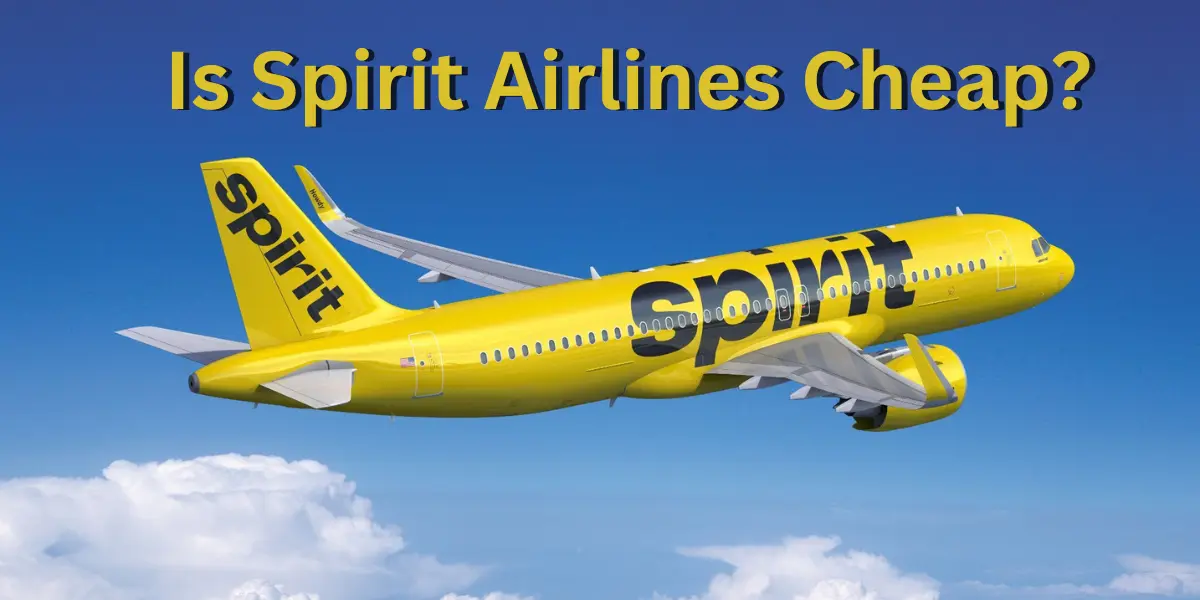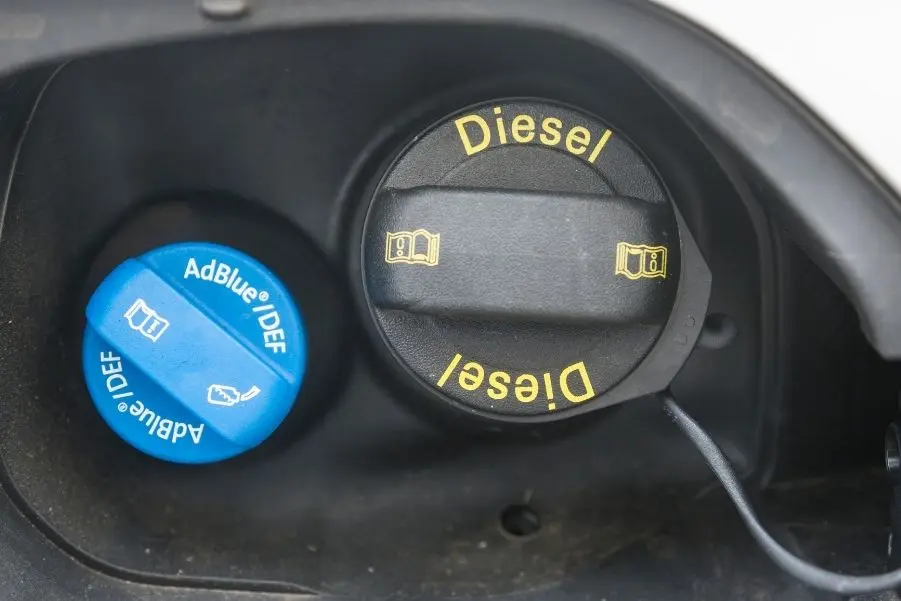Spirit Airlines has earned a reputation for having some of the cheapest air deals around. But with bare-bones in-flight services and plenty of fees, how does Spirit offer such low base fares and still turn a profit?
Read on to find out why Spirit Airlines is so cheap.
The Ultra Low-Cost Business Model
Let me explain why is Spirit Airlines so cheap. Spirit Airlines is so cheap because it follows the ultra-low-cost carrier (ULCC) model. As one of the pioneers of this budget airline business model, Spirit aims to save money across its operations to offer the lowest possible fares.
This allows them to undercut many major airlines on base ticket prices and still make a profit by charging ancillary fees.
One of the reasons why is Spirit Airlines so cheap is that ULCCs like to keep their costs down through measures like:
- Operating a uniform fleet of Airbus single-aisle jets to streamline maintenance and training
- No frills service – there is no free food or drinks on Spirit flights
- High-density seating to fit more passengers on each plane
- Charging fees for carry-on and checked bags, seat assignments, onboard refreshments and other services
So by saving money wherever possible and then earning ancillary revenue through fees, Spirit can profitably sell tickets for base fares far cheaper than most competitors.
This ultra-low-cost model is central to why Spirit Airlines is so cheap.
The Power of Ancillary Revenue
A key element that enables Spirit Airlines’ cheap ticket strategy is ancillary revenue from baggage fees, seat assignments, onboard sales and other optional services. This provides crucial extra earnings on top of just base airfare sales.
Ancillary fees accounted for an impressive 49.9% of Spirit’s total revenue in 2021. Without all these additional charges, Spirit likely couldn’t sell such low-priced tickets and still make money. Their average passenger paid roughly $56 in ancillary fees last year.
So while base fares may seem dirt cheap, many travellers end up paying a lot more after all the add-on charges. But the availability of basic low fares still attracts plenty of budget-conscious flyers.
Avoiding Costly Airports is Key
Another major way Spirit keeps prices low is by mainly flying routes to and from less expensive secondary airports instead of major international hubs. Operating flights at airports like Fort Lauderdale instead of Miami allows Spirit to pay lower fees and airport charges.
Spirit primarily focuses on direct point-to-point leisure routes instead of complex connecting itineraries. Short flights between smaller airports have much lower operational costs compared to sprawling global mega carriers.
Less airport congestion also increases on-time performance.
So by largely avoiding high-cost major airports, Spirit reduces expenses that would otherwise make cheap base fares almost impossible. Their route network strategy is optimised to enable the super low ticket prices they are famous for.
High Aircraft Utilization Rates
To maximize revenue, Spirit keeps its planes flying in the air for longer periods each day through tightly coordinated schedules and quick ground turnarounds. Their fleet has amongst the highest daily aircraft utilization rates in the US airline industry.
By keeping planes in the air earning money for over 12 hours per day on average, compared to competitors closer to 9 hours, Spirit wrings more productivity and profit out of each of its 90+ jets. Higher aircraft usage allows them to spread fixed costs over more in-service hours to help enable cheap fares.
Their no-frills service model also facilitates fast 25-minute turnarounds between flights. This operational efficiency directly contributes to Spirit’s ultra-low-cost base fares that beat competitors.
Advantageous Labour Costs
Labour is a major cost component for any airline. Spirit also maintains an advantage through lower labour costs to sustain cheap ticket prices. The average yearly wage of a Spirit Airlines pilot is $98,000 versus about $180,000 at Delta.
By managing to keep employee compensation below industry averages, especially for pilots, Spirit reduces its overall costs substantially.
Due to strong competition amongst pilots for coveted jobs at major airlines, smaller-budget carriers can get away with offering lower salaries.
So by taking advantage of labour market dynamics, Spirit pays its staff far less than rival airlines enabling cheap base airfares for flyers seeking a bargain.
What Do Customers Say About Spirit Airlines?
With bargain basement fares comes no-frills service and plenty of fees. So what do actual Spirit Airlines passengers think about the experience of flying America’s largest ultra-low-cost carrier?
Reviews are decidedly mixed leaning towards negative. Spirit earns just 1.5 out of 5 stars on AirlineRatings.com based on over 600 user reviews. On the popular rating site Skytrax, Spirit scores 2 out of 10 based on thousands of flyer ratings.
Positive reviews highlight the cheap base fares and direct routes. As long as you know what to expect with minimal included services and irritating fees, Spirit offers fantastic deals. Some travellers felt they got great value for money from Spirit Airlines.
However, negative feedback focuses on poor customer service, constant nickel and diming for add-ons, crowded cramped cabins, unreliable flight schedules and an overall unpleasant flying experience:
“Good comfort and convenience. Fees for all bags, but that wasn’t a surprise. Onboard I had trouble with WiFi due to an issue with my phone but flight attendants kept at it until it was solved. I was keen because the Super Bowl was on!”
“My husband and I were returning to Orlando, and the crew at the Kiosk was very rude. According to them, my backpack was not appropriate because I had to push it into the measuring frame(my backpack measurements are 18x14x8). The manager said, “JUST PAY AND LEAVE”. After I told her that Orlando’s airport was okay with my bag, another kiosk employee said “This is not Orlando’s Airport and we make our own rules”. On top of that, she asked me if I knew how much money was in my card, so I could pay for someone else’s bag because that customer didn’t have a card. As you can see below, my bag fitted. I hope someone from Spirit can do something about this, so other customers don’t go through the same stress.”
“Good experience even after a delay little bumpy ride because of weather but great to arrive in warm weather 81 degrees in Florida”
“Spirit is the worst airline.. they cancelled our flight without telling us and then gave us misinformation about replacement flight. I ended up paying 350 extra for a flight I had to wait 15 hours for. DO NOT use spirit they are Pieces of you know what”
So experiences vary widely. Spirit seems best for flexible travellers focused strictly on finding the cheapest airfare without expectations of much service. But they remain popular due to their compelling low fares despite poor reviews.
Optimised Route Network
To keep load factors and yields high, Spirit primarily operates busy short and medium-haul routes under 3 hours in length like Los Angeles to Las Vegas or Chicago to Florida. By sticking to predominantly leisure-oriented city pairs with strong travel demand, Spirit flights consistently boast 82% load factors on average.
This route network strategy concentrates operations on sectors likely to have consistently high passenger volumes instead of unpredictable long-haul international flights. Full flights maximize revenue essential to maintaining cheap base fares.
Concentrating on routes under 3 hours’ driving distance also minimizes costly overnight aircraft parking fees. Short routes can be operated as day returns keeping planes profitably aloft.
Final Thoughts
So in summary – why is Spirit Airlines so cheap? Spirit Airlines saves money across the entire organization to profitably offer the cheapest possible airfares and still reach industry-leading profit margins. Strong ancillary fee revenue on top of bare-bones base fares is essential to making their business model work.
Avoiding major airports, keeping planes flying longer daily, fast turnarounds, advantageous labour rates and optimized high-volume routes all enable Spirit to sell tickets much cheaper than competitors.
So while cramped seats and myriad fees await, travellers solely seeking the lowest possible airfare, Spirit Airlines delivers on super cheap flights. The ULCC model has worked brilliantly allowing them to consistently undercut other airlines on base fares across North America.


